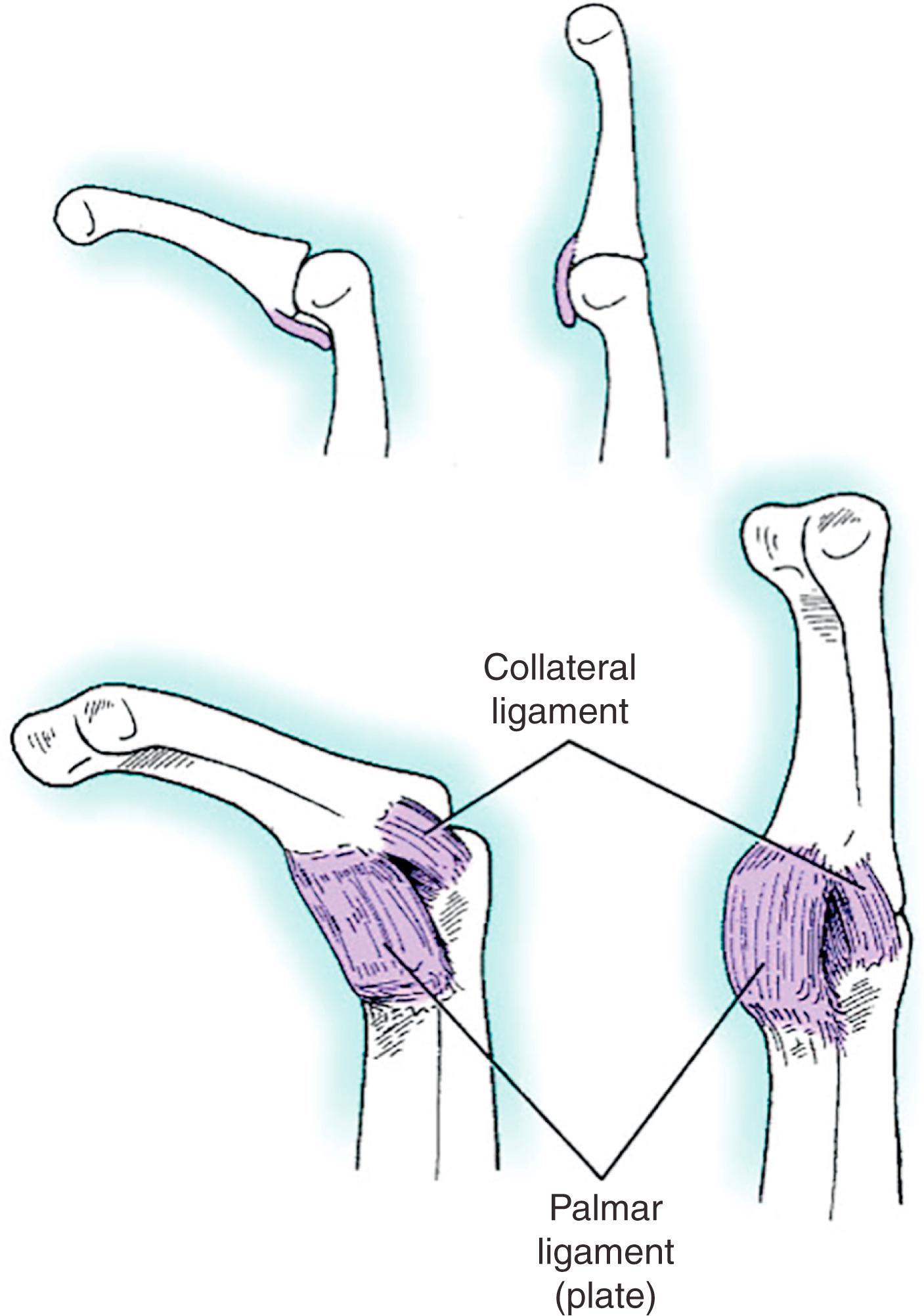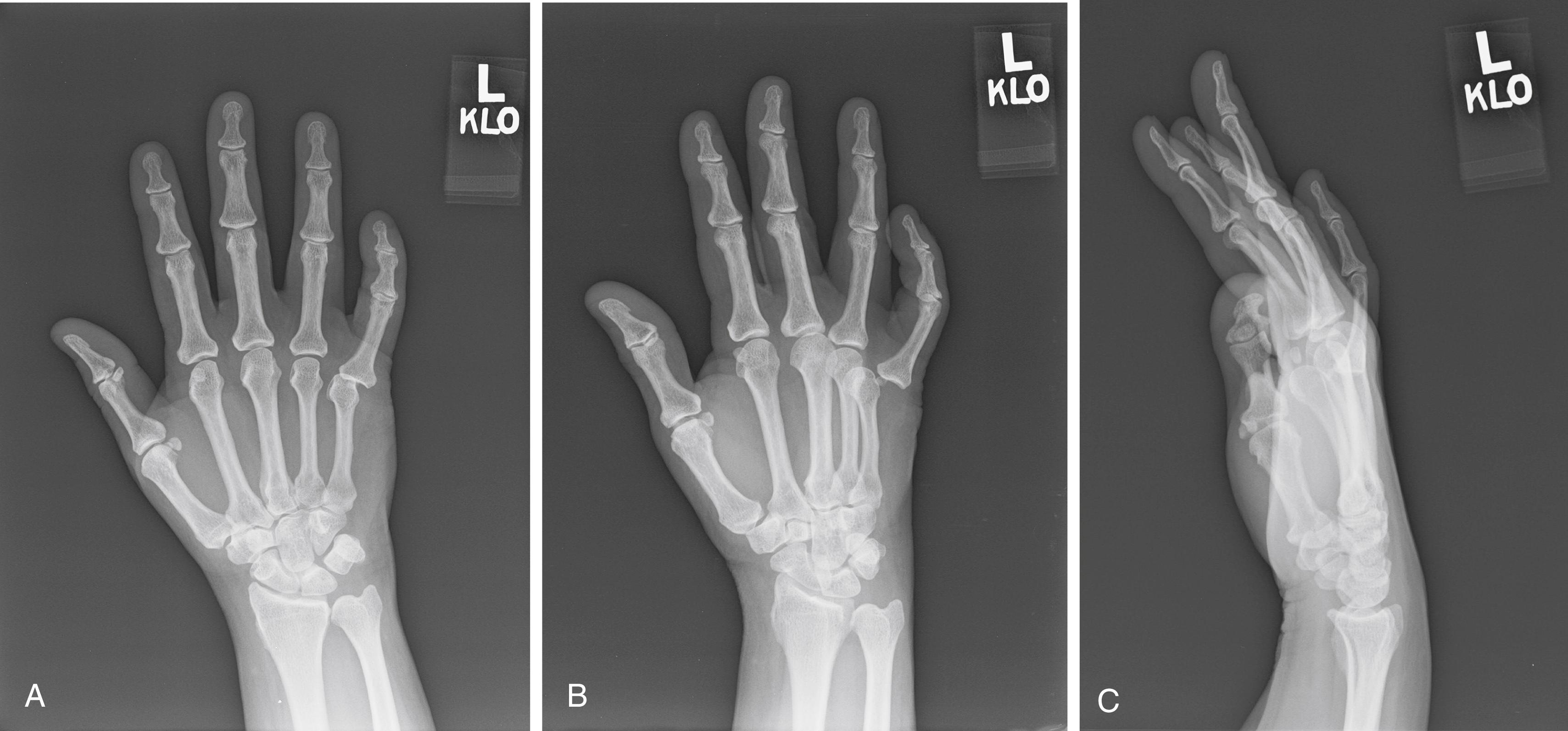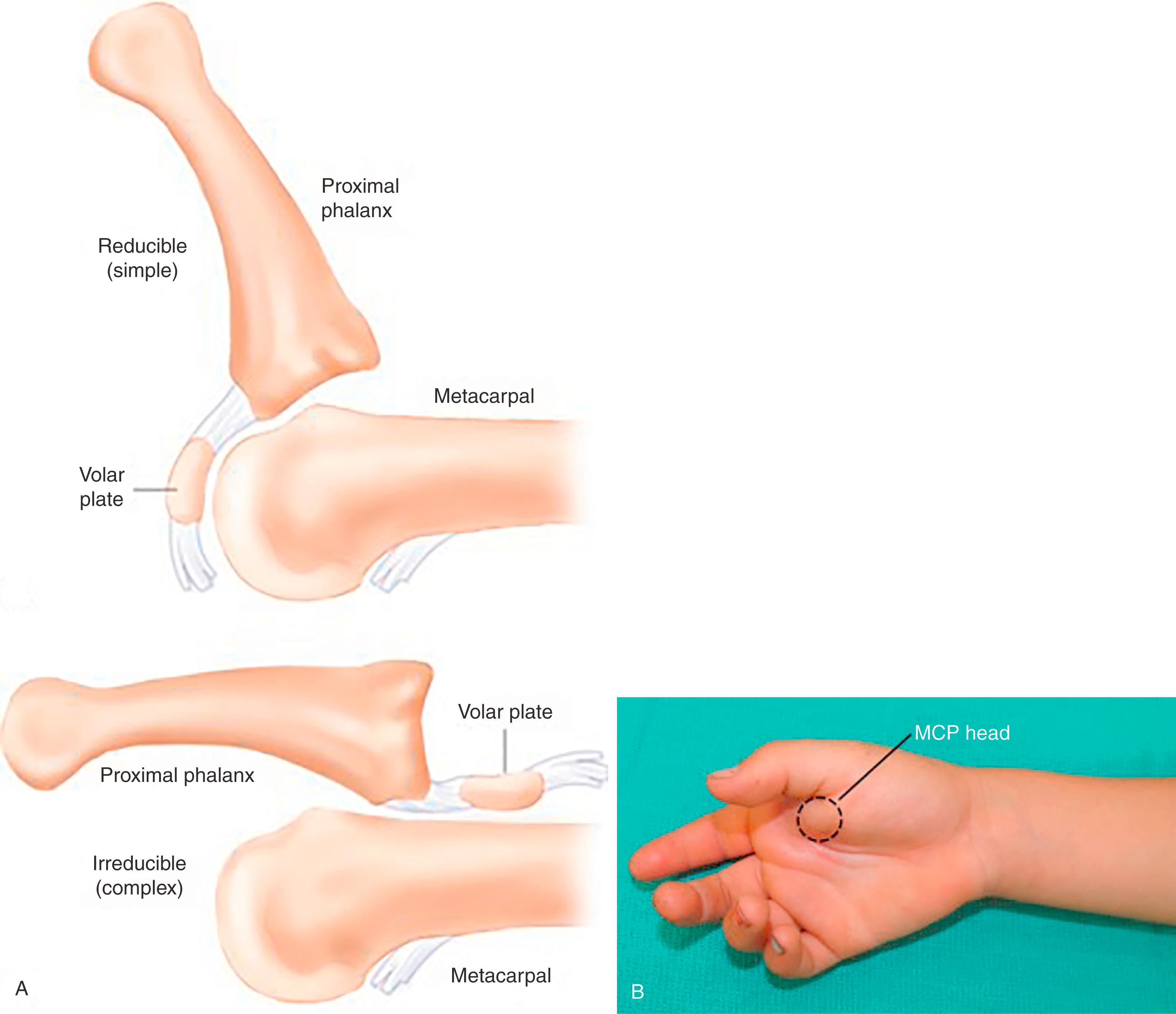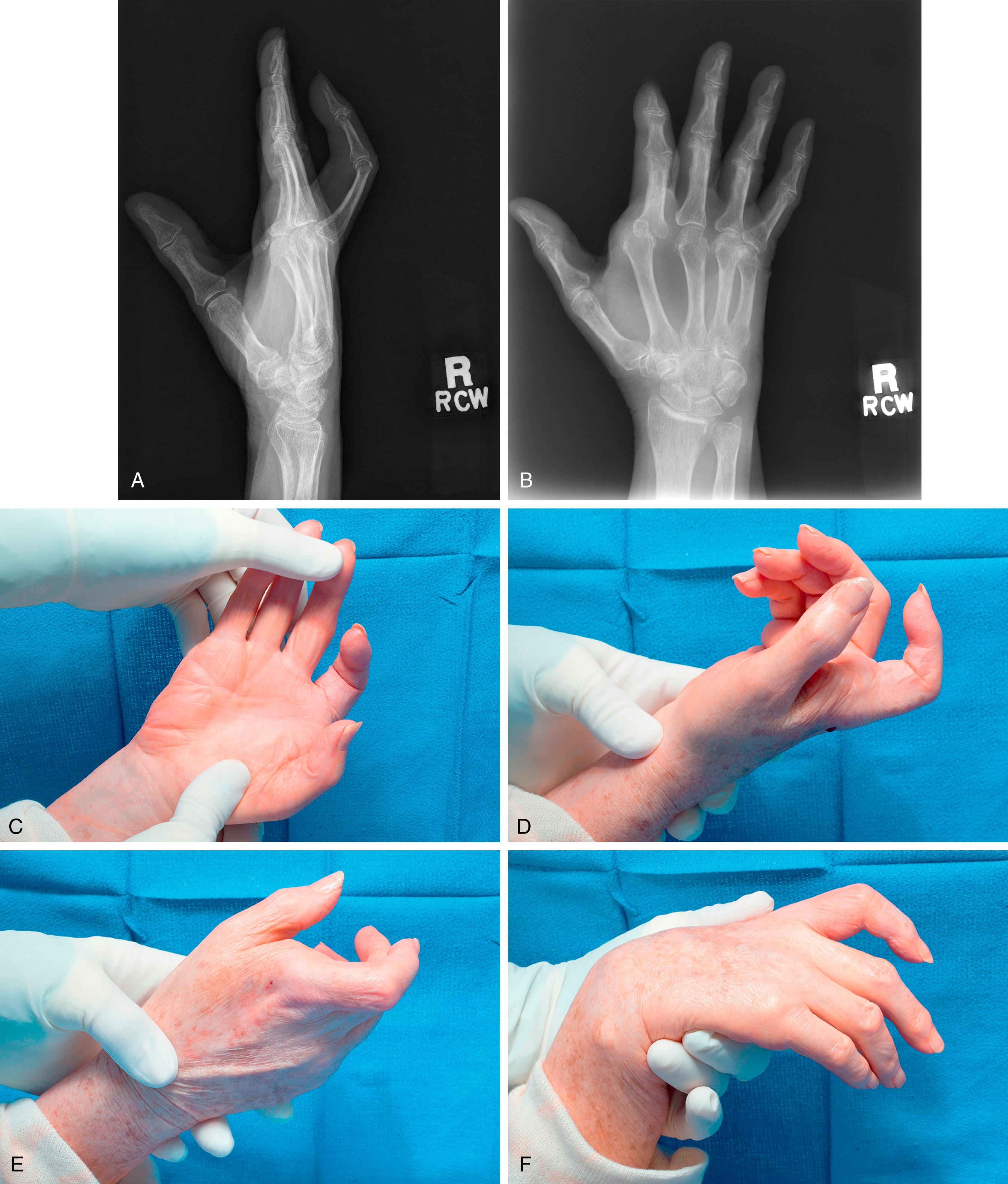Physical Address
304 North Cardinal St.
Dorchester Center, MA 02124
Dislocations of the metacarpophalangeal (MCP) joint of the hand are caused by trauma to the hand, typically from a fall, with forced hyperextension of the joint. Athletes may more frequently sustain these injuries particularly in contact sports or ball-handling sports that require diving, setting, or catching balls at very high speeds. This chapter will focus on dislocations resulting in isolated soft tissue damage. Joint dislocations associated with fracture to the phalanx and/or metacarpal are covered in their respective chapters.
The MCP joint is a semiconstrained joint. The stability of the joint relies in part on the ball-in-cup design of the respective anatomy of the metacarpal head and the proximal phalanx base ( Fig. 77.1 ). The congruency of this joint design lends a small amount of inherent stability. The ball-in-cup design allows motion in several planes including flexion and extension, abduction and adduction, and rotation.

The majority of joint stability is afforded by the soft tissue constraints around the joint. Soft tissue stability is afforded by the primary stabilizers which insert directly on the bone and joint capsule. These include the dorsal capsule, the volar plate, and the ulnar and radial collateral ligaments. Secondary stabilizers include those which do not insert directly around the joint but their presence adds to the stability. This includes the flexor tendons and associated pulley system, the extensor tendon and its mechanism, lumbricals, sagittal bands, superficial and deep intermetacarpal ligaments, and the natatory ligaments.
The metacarpal head has an eccentric, oval shape with a wider dorsal dimension that narrows palmarly in the axial plane. In the lateral plane, the MCP head is cam-shaped. The collateral ligaments arise from the concave metacarpal recess of the metacarpal head. The collateral ligaments consist of proper and accessory portions. The accessory ligaments are smaller and longitudinally oriented, lending stability in full extension. The proper collaterals are stronger ligaments, running obliquely from dorsal to palmar direction, and thus lend stability in flexion. They insert dorsally on the metacarpal and palmarly on the phalanx. Due to this anatomy, the collateral ligaments tighten as the joint flexes and are lax as the joint extends. The collaterals are lax in extension, allowing for increased side-to-side motion of the joint in full extension. With collaterals tight in flexion, this affords increased lateral stability in a clenched fist position. The proper collateral ligaments are the primary stabilizer of the MCP joint.
The dorsal capsule is relatively thin and loose, making this a weak constraint for dorsally or volarly directed forces. The volar (or palmar) plate is an extremely strong connective tissue structure that prevents joint hyperextension. The volar plates of adjacent digits are connected by the interpalmar plate ligaments (radial, central, and ulnar) that supply lateral metacarpal stability.
After reduction of dorsal dislocations, the joint is ideally held at 20–50 degrees of flexion. Placing the MCP at 90 degrees of flexion places too much tension and stress on the collateral ligaments and impedes their healing potential. Placing the joint in full extension leads to improper balancing of the intrinsic and extrinsic ligaments and can lead to the intrinsic minus deformity. Placing the joint in the proper midarc of motion also prevents joint contracture and allows the MCP joint to heal in an ideal position.
MCP dislocations are classified anatomically by the direction of dislocation, either volar or dorsal. Dislocations are almost always dorsal, although volar dislocations have been described. The dislocation direction is classified by the position of the distal segment, that is, a dorsal dislocation notes the proximal phalanx to be dorsal ( Fig. 77.2 ). The dorsal dislocation occurs typically from a hyperextension deformity. Volar dislocations, least commonly seen, can occur with either hyperflexion or hyperextension forces.

MCP dislocations can be further classified as either reducible or irreducible, also referred to as simple or complex, respectively. Simple dislocations have no interposition of the volar plate, sesamoids, or other soft tissue and are typically successfully closed reduced. On clinical examination, the simple dislocation may appear more severe as the finger will typically rest in a very obvious hyperextended position ( Fig. 77.3 ). The classic radiographic finding is the MCP joint at 90 degrees of hyperextension. An adolescent series by Maheshwari et al. noted 89% of patients with the classic 90-degree sign on radiographs were able to be successfully closed reduced.

Complex or complete dislocations involve interposed soft tissue and result in complete dislocation of the joint. The volar plate and sesamoid may become entrapped within the joint. The proximal phalanx typically sits parallel to the metacarpal and clinically may, deceivingly, appear less severe ( Fig. 77.4 ). Other methods of entrapment include the metacarpal head “button holing” in the natatory ligaments or transverse metacarpal ligament. The named “Kaplan’s lesion” is rare but involves the metacarpal head button holing into the palm volarly with the volar plate interposed between the proximal phalanx and metacarpal head; it is most commonly seen in the index finger. Kaplan described dimpling of the skin over the proximal palmar crease as a pathognomonic sign for a dorsal complex dislocation.

Become a Clinical Tree membership for Full access and enjoy Unlimited articles
If you are a member. Log in here